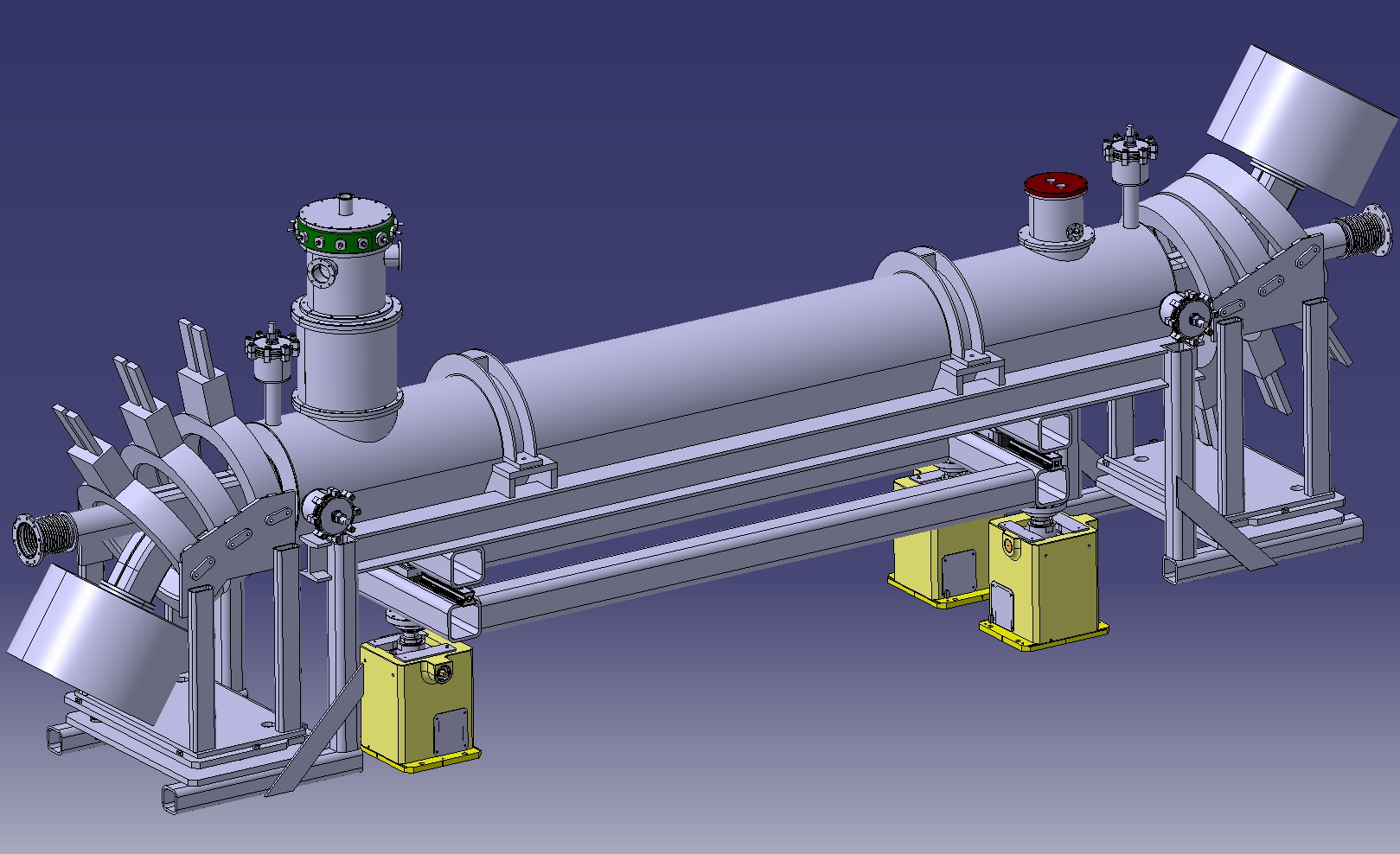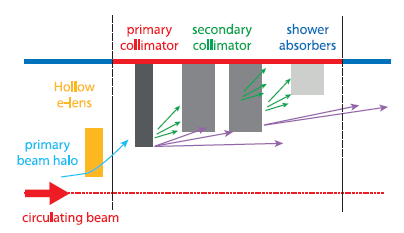by Stefano Redaelli (CERN) with Emma Cooper (STFC)

Design of the LHC hollow e-lens. Courtesy of D. Perini for the EN/MME team at CERN
Loss spikes have already affected the operation of the LHC, and control of beam losses is recognised as a critical concern for performance at higher beam energies and intensities.
Hollow electron lenses are the most promising of a number of methods being considered to improve the beam collimation system, and are expected to boost the performance of the LHC and of its High-Luminosity (HL) upgrade through active control of halo particles’ diffusion speed and tail population. This is achieved with a low-energy, intensity-modulated hollow electron beam that runs co-axially to the circulating hadron beam, over a few meters, and acts on the halo particles at large transverse amplitudes without perturbing the beam core. Particles outside the core that see the electromagnetic field of the electron beam are driven unstable and disposed of by the present collimation system at controlled loss rates, rather than at larger loss rates and at unpredictable moments.
Following a successful experience at the Tevatron, where a hollow e-lens was used for collimation beam tests for the LHC, a conceptual design of a hollow e-lens optimized for the LHC was produced. At CERN, this is an effort across all departments of the Accelerator and Technology Sector. The conceptual design is rapidly evolving into a technical design for implementation into the LHC. While a detailed timeline for deployment will be established after accumulating some operational experience at 6.5 TeV, the aim is to prepare a technical design by the end of 2015 in order to be ready for LHC needs beyond Long Shutdown 2.
The present baseline design of the LHC hollow e-lens was worked out in collaboration with the Tevatron team. The electron beam parameters achieved in a test stand for LHC collimation studies at Fermilab indicate that a 5 A electron beam current can be achieved with a 2.5 mm radius gun at 10 kV. In order to stabilize the hollow beam and squeeze its inner radius to the required dimensions around the ~300 micron rms size hadron beams, a precise superconducting solenoid of up to 6 tesla is required. An ‘S’ shape design, with injection and extraction of the electron beam on opposite sides of the proton beam, is proposed to compensate edge effects that might otherwise perturb the beam core particles that ‘see’ asymmetric e-beam distributions at the injection and extraction locations.

Scheme illustrating the conceptual integration of a hollow elens in the present collimation system hierarchy. This device controlled the loss rates while the standard collimation remains in place to dispose of the halo particles. Credit: CERN
